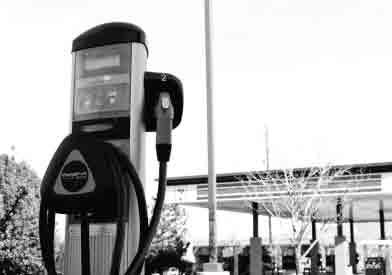
5 minute read
Green
from Nov. 15, 2012
Hope and climate change
President Obama’s mention of climate change during his victory speech last week caught many off guard, including environmentalists who had been dismayed at his ignoring the issue during the campaign season. Obama said he wants “An America not threatened by the destructive power of a warming planet.”
Advertisement
But environmentalists won’t let him slide this term if he doesn’t follow through with concrete efforts to encourage sustainable energy and practices in the U.S. An opinion piece by Bill McKibben in the Washington Post discussed several measures Obama will need to take to prevent further environmental damage, including stopping the Keystone XL pipeline, which is currently under construction despite several minor setbacks (“Pipe blockage,” Oct. 25).
If progress on the pipeline continues, “it will mean the president doesn’t understand that his legacy requires dealing with climate change—and that dealing with climate change requires leaving carbon in the ground,” McKibben wrote. “There are lots of other actions that will be necessary, too: A serious tax on carbon, for instance, has long been the sine qua non of real progress. … The truth is, we’ve got to do it all, and it will be hard, harder than anything else the administration is considering, since it runs straight up against the richest industry on Earth.” Despite Obama’s recent regulations on the auto industry to encourage fuel-efficient cars—a standard of 54.5 mpg by 2025—McKibben notes that any reduced emissions would be canceled out by the fuel used from the Keystone XL pipeline. McKibben also writes that climate change is not such a taboo topic with major publications anymore, citing Bloomberg Businessweek’s recent cover, which read “It’s Global Warming, Stupid” in large, underlined letters above a photo of a flooded Manhattan street. While many climate scientists acknowledge that Hurricane Sandy alone is not indicative of global warming, more frequent hurricanes and natural disasters are some of the many consequences of climate change.
Sunspots
Many school facilities in Nevada—including several higher education institutions such as Truckee Meadows Community College, Western Nevada College and Desert Research Institute—are now producing power from solar arrays. Recently, Black Rock Solar, a nonprofit solar power organization that helps to outfit local facilities with solar resources, installed a new solar array at Rite of Passage Silver State Academy in Yerington.
Around 2.5 megawatts of power is produced by solar power throughout the state, including half a megawatt generated for the Pyramid Lake Paiute Tribe. Nevada State College in Henderson and Hillside Elementary School in Lockwood are next on the list to receive arrays from Black Rock Solar.
—Ashley Hennefer
ashleyh@newsreview.com
ECO-EVENT
The Reno Bike Project will hold a Freewheels for the Kids work party to fix up bicycles to be donated to Children’s Cabinet and Fireman’s Homeless Kids Christmas Party. Work parties will be held on Dec. 1 and Dec. 5, 11 a.m.-4 p.m. Reno Bike Project, 541 E. Fourth St. For more information, visit www.renobikeproject.com.
Got an eco-event? Contact ashleyh@newsreview.com. Visit www.facebook.com/RNRGreen for more.
PHO TO/A SHLE Y HENNEFER
This charging station, located next to a gas station in the parking lot of Einstein Bros Bagels on South McCarran Boulevard, is one of several throughout the city.
Plugging along
Reno’s infrastructure for electric vehicles is steadily improving
by As of last week, Reno has two more electric vehicle supply equipment stations (EVSEs), making the total public EVSEs for the region—10. The new EVSEs, located on East Ninth Street, are part of Washoe
Ashley County’s Clean Air Campaign, according to Kevin Dick, director of the
Hennefer air quality management. ashleyh@ “The gasoline powered motors and diesel powered motors are a probnewsreview.com lem for us,” he said at the ribbon cutting for the new charging stations. “That’s something everyone is driving around in, and it’s difficult to regulate. We do have the smog check program that helps keep their vehicles tuned, but we also recognize that we have to have better solutions in our community.” It’s been a tumultuous year for electric vehicles (EVs). On one hand, most responses to EVs have been positive. “Here is the second true launch year, and the [Chevrolet] Volt is now selling better than half the cars on the market,” says Travis Johnson, manager of emerging technologies and electric transportation. “Just under 3,000 a month [nationally]. That’s what GM wanted to see, the sales signifying success. ... There are over 57,000 new plug-in vehicles in the
To find charging country. There’s certainly a lot of good news out there.” stations throughout Here in Nevada, 358 plug-in vehicles are registered by the Departmentthe region, visit www.nevadaeva.org. of Motor Vehicles, including 122 Volts, 60 Nissan LEAFs, 11 Fisker Karmas and 16 Tesla Roadsters, among others. On the other hand, Johnson says the political climate targeted EV manufacturers negatively, most notably luxury car companies like Fisker and Tesla. And the prices of EVs—generally a minimum of $25,000— aren’t exactly affordable for car buyers in a struggling economy, although the $7,500 rebate is often considered worth the investment. But footage of the long lines in front of gas stations during the aftermath of Hurricane Sandy brought EVs into the spotlight again as part of a larger look at alternative transportation. Locally, Johnson is part of a task force—formerly called the Electric Vehicle Infrastructure Readiness Task Force, but now just the Nevada Electric Vehicle Accelerator—working on developing infrastructure for EVs, and last year referred to 2012 as the “year of the electric vehicle.” He says many of the goals have been met, through opening new charging stations and holding a local celebration for National Plug In Day (“Switching gears,” Sept. 20). And it’s not just the charging station that’s important, he says, but also the location. Currently the 10 EVSEs are located throughout the city in high traffic areas, and can be found on a map of Reno at Nevada EVA’s website, www.nevadaeva.org. He says the move to integrating more charging stations throughout the region, including Truckee, Tahoe and Carson City, will hopefully give consumers confidence in making longer journeys with EVs. “Having one in Carson City gives you that extra insurance that you can try to make it up to South Lake,” he says. Johnson notes that he has taken his family on trips to Truckee and Tahoe City in a Nissan LEAF. More charging stations and programs are slated for 2013, Johnson says. Ω


















